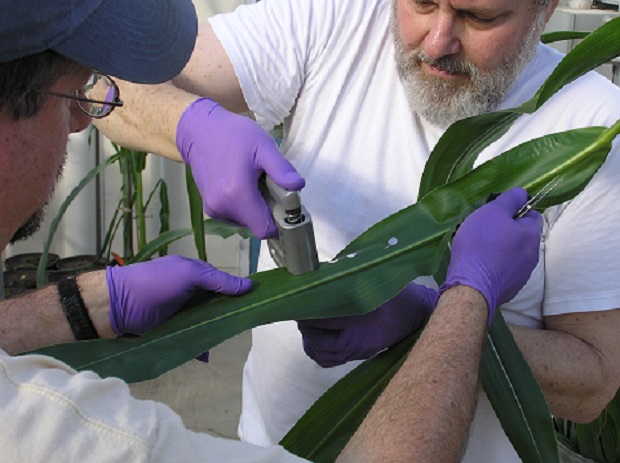
If only one species of tree existed in a particular location, a single disease could wipe out all of the trees in that ecosystem.
How can biodiversity be more efficiently mapped and identified to avoid such ecological collapse? That's the question motivating Art Zygielbaum and a multi-institutional team of researchers who have been awarded a grant from Dimensions of Biodiversity, an initiative jointly funded by the National Science Foundation (NSF) and NASA.
"The 'Optical Diversity' hypothesis predicts that variations in the spectrum of light reflected from vegetation are influenced by a combination of things including the structure of plants, the optical characteristics of the leaves and where the plants are in their life cycle," said Zygielbaum, research associate professor. "Each species presents a unique set of spectral signatures in the light reflected from them. These signatures provide valuable clues to the underlying functional properties of plants."
The work proposed by the grant-funded study will aim to identify ways of measuring and analyzing the combined spectra at several scales to determine the distinguishing spectral characteristics that indicate a diversity of species, and to relate these features to underlying functional properties.
Zygielbaum is part of a team led by the University of Minnesota with researchers at Appalachian State University, the University of Wisconsin and UNL. In mid-April, they decided to submit four proposals — due three weeks later on May 6 — requesting a total of $2 million in grant funds.
In August, the NSF program director informed the group that its proposals had been recommended for full funding. On Sept. 13, word came that their grants had been approved, which means NSF funding for UNL's research could total more than $716,000 for the four-year project.
"We were all shocked and amazed when we got word that the review team had recommended our proposals for funding," Zygielbaum said. "Having four schools successfully coordinate their efforts in such a short time is pretty special. The overall principal investigator, Jeannine Cavendar-Bares of the University of Minnesota, deserves enormous credit for pulling this off."
UNL's part of the study includes comparison and calibration of instruments, development of data systems, and use of the remote sensing aircraft housed at the Center for Advanced Land Management Information Technologies (CALMIT).
"This grant award demonstrates the importance of CALMIT and remote sensing to the understanding of earth processes," said John Carroll, director of the School of Natural Resources. "A strong remote sensing program is something that benefits SNR, but also the university as a whole."
For several years, Zygielbaum and others at UNL have used products from CALMIT's remote sensing aircraft and the airborne image spectroscopy program. These technologies will be used to collect and process information from across the optical spectrum throughout the course of the study, the bulk of which will take place at Cedar Creek Reserve in Minnesota.
Experiments and measurements will also be conducted at the Agricultural Research and Development Center in Mead, Neb., in addition to other natural and managed ecosystems in Minnesota and Wisconsin.
John Gamon, professor at the University of Alberta and a UNL visiting/adjunct professor also working on the study, said that CALMIT's resources and Zygielbaum's expertise are essential to the success of the grant-funded biodiversity study.
"The CALMIT airborne system provides a critical capability for airborne remote sensing using hyperspectral imagery that is a key part of our study and is a part that interests NASA in particular," Gamon said.
That capability is central to the study design. Detecting plant optical diversity at leaf, canopy, airborne and satellite levels provides a basis for developing operational methods for mapping biodiversity from remote sensing.
As ecosystems continue changing globally, this study may help people better understand their evolving environments.
"This is a critical need in a world of diminishing biodiversity due to human disturbance and climate change," Gamon said.
With the grant funding in place, Zygielbaum said that he’s ready for the work ahead and for the opportunity to contribute to a broader biodiversity knowledge base.
"We have the potential to make a real difference in understanding biodiversity," he said. "This is good for science and for our environment."
— Mekita Rivas, Natural Resources